The Latest iPhone Challenger: HTC's Evo 4G
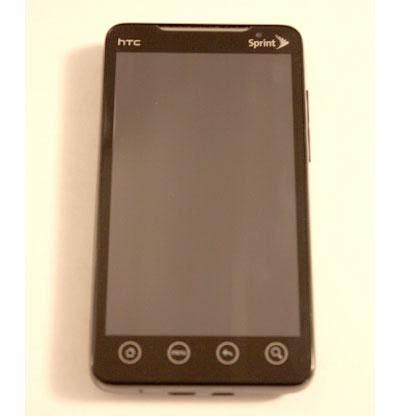
New Kid On The Smartphone Block
In terms of overall size and heft, the Evo 4G is a bit bigger than Apple's iPhone. But unlike the iPhone, the Evo 4G's screen takes up almost all of the front surface area of the device -- there's almost no wasted space.
Powered by Android 2.1 and HTC's Sense UI, the Evo 4G is user friendly right out of the box. The Home, Menu, Back and Search touch-sensitive buttons are tucked neatly below the screen. There's even a front-facing video camera for video conferencing.
In terms of networking, the Evo 4G supports WiMAX and EVDO Rev.A, as well as Wi-Fi, Bluetooth 2.1, and GPS. Sprint's 4G network isn't yet lit up nationwide, so customers will have to temper their enthusiasm for next generation bandwidth, but as a 3G device, the Evo 4G works just fine.
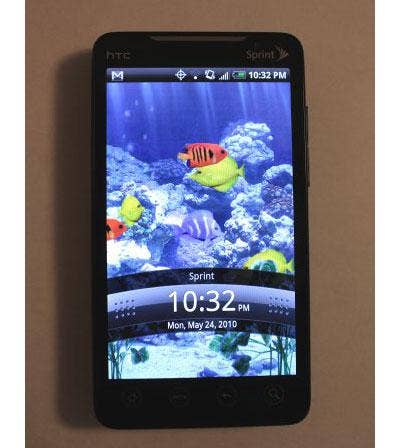
The Main Event: Evo 4G's Screen
The Evo 4G's 4.3-inch WVGA 480 x 800 capacitive touch screen is the device's most arresting feature, and the largest found in any Android device to date. It's dazzling, bright, and delivers vivid, soothing colors. And it boasts graphical performance, a result of having Qualcomm’s 1GHz Snapdragon chipset under the hood.
You may never have craved an animated aquarium as your mobile device wallpaper, but when viewed on the Evo 4G, it starts to make sense.
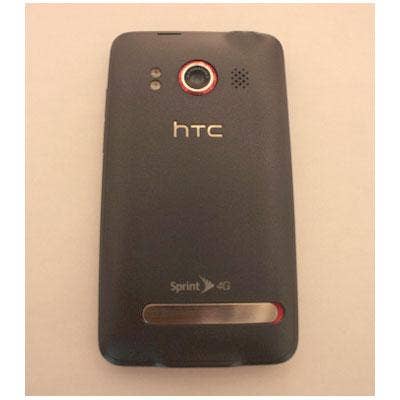
Evo 4G On The Flip Side
The Evo 4G comes with plenty of content creation tools, and the back of the device has an 8 megapixel autofocus camera with dual flash to go along with a high definition video camcorder and microphone. HTC expects users to watch a ton of video on the Evo 4G and has included a pull-out metal stand that props the device up at a convenient viewing angle.
The device's casing has a rubberized feel that's resistant to scratches and is designed to be pried off with a fingernail. It takes a while to get comfortable with this, and users will probably be initially afraid of snapping off an important piece of plastic. Still, it's a convenient design feature.
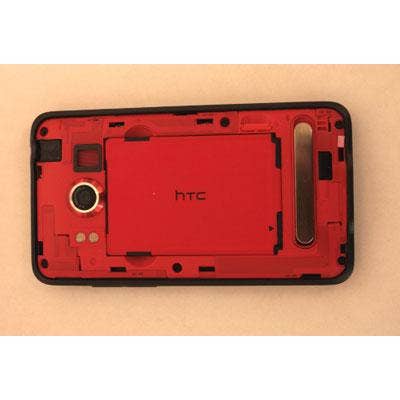
The Red Interior
Removing the back shell of the Evo 4G reveals its stylish red plastic innards. Users aren't going to be spending a lot of time with the back removed, but it's nonetheless eye-pleasing. It's also interesting to see that the sleek design sensibility of the device isn't just on the surface.
However, the Evo 4G's battery life is one of its main drawbacks. This is true of many current smartphones, and it's hardly surprising given the device's large screen and powerful processor. But while the Evo 4G is the kind of device that will require charging every evening, its feature set and UI more than make up for its power-hungry tendencies.
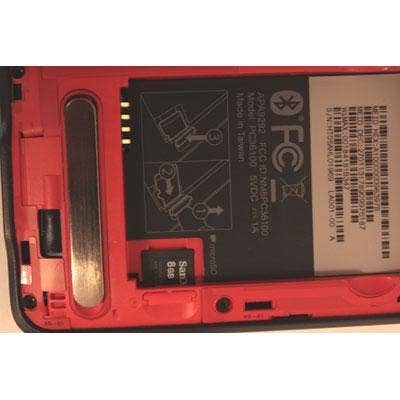
Where The Memory Lives
The Evo 4G comes pre-loaded with an 8-GB microSD card. Users can remove the card by pulling up on a small tab and delicately pulling out the tiny card, but this maneuver is best performed in a brightly-lit environment because these little devils are easy to lose. Storage upgrades are inexpensive -- 16-GB microSD cards are selling on Amazon for as little as $30.
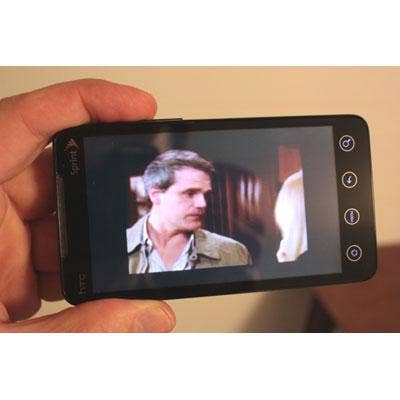
Mobile Channel Surfers, Take Note
More than any other smartphone to date, HTC's Evo 4G is optimized for video viewing. However, the device runs Android 2.1 and thus doesn't support Flash Player 10.1, although that's coming in the forthcoming release of Android 2.2, code named Froyo. The Evo 4G does come with the lightweight version of Flash, but that doesn't give users access to the full range of mind-numbing video that's available online.
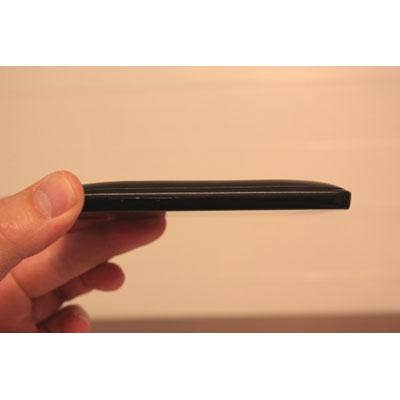
Stunningly Sleek Design
For everything the Evo 4G packs under the hood, the device's design is remarkably slim. If you're going to carry it around in a protective case, it'll barely fit within a pants pocket, but that's just part of the price you'll pay for having a device that makes people gawk with envy.
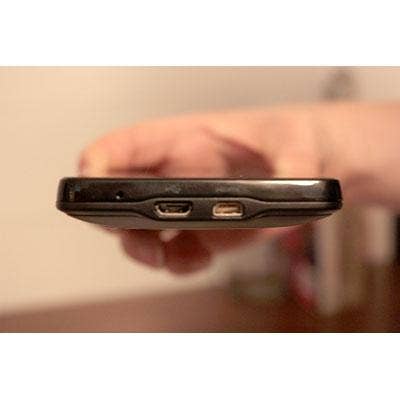
Ports Aplenty
The Evo 4G features a Micro-HDMI port (right) that allows the video it captures to be shown on an external display. It's useful feature, but early reviews of this particular feature have been less than glowing, and full compatibility with all external displays isn't quite there yet. The device also includes a microUSB port and an A/C adapter for charging.